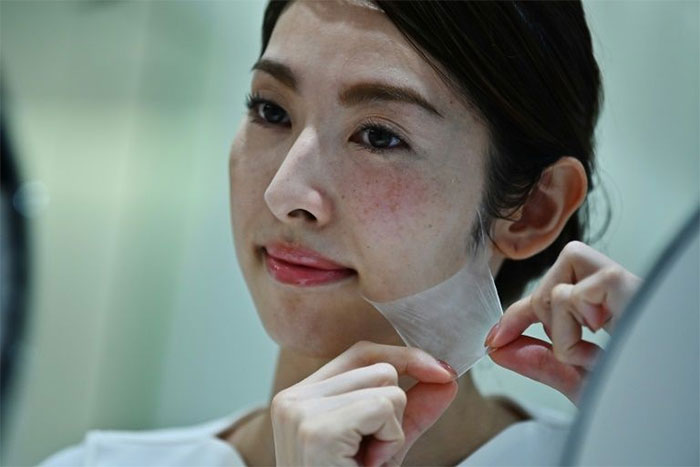Successfully created the world's first spray-based artificial leather
Japanese cosmetic company Kao has developed a special moisturizing mask, which can be used to cover scars or create transparent medical stickers in the future.

This skin is made of super-thin fibers, only 1/100 of the thickness of a human hair.
In its December 4 announcement, Kao said the skin was made up of super-thin strands, only one-hundredth the thickness of a human hair. The fibers are sprayed on the face after the user has applied lotion. A thin layer of skin will quickly form, with the mechanism acting as a "greenhouse", thereby helping the real skin underneath to absorb moisture while keeping the skin "easy to breathe" for hours. This special mask can be left on overnight or removed after about 1 minute.
According to Kao's facial care expert, Masayuki Uchiyama, this is the first cosmetic product in the world to use super-fine fiber technology . Kao's cosmetic experts have spent 10 years researching and manufacturing this spray-on handheld. They want to give users a small, compact product as possible. Each of these products is priced quite high, about 50,000 yen (460 USD).
Kao predicts that sales from cosmetics in Japan could reach 100 billion yen if the technology is applied in the medical field, namely scar cover or medical tape manufacturing.
- Artificial leather is manufactured in a fully automated process
- Artificial leather helps people to "touch" from afar
- Artificial leather for human robot
- Successfully developing artificial muscles like real ones, being able to reproduce themselves
- Launch of artificial leather robot, communication with people
- Artificial skin feels real
- 3D printing artificial leather - a new step for cosmetics industry
- Help the young face to be 20 years old by 'applying' artificial skin
- Scientists have developed artificial skin that feels like real leather
- New material is capable of healing cuts
- Successfully developed an artificial arm that can feel real
- Russia produces artificial skin for burns and eye diseases
- Successfully build the first plastic cell
- Artificial skin from microalgae, provides oxygen to help wounds heal
 The US company is about to build a supersonic passenger plane of 6,000km / h
The US company is about to build a supersonic passenger plane of 6,000km / h Japan develops avatar robot as in fiction film
Japan develops avatar robot as in fiction film Australia tested the world's first mango picking robot
Australia tested the world's first mango picking robot America develops technology to separate water from animal waste
America develops technology to separate water from animal waste